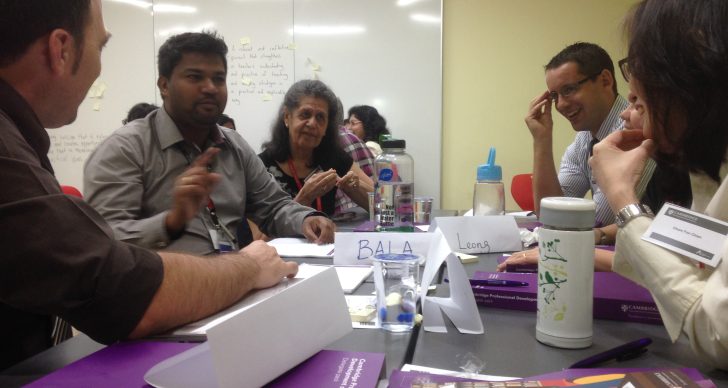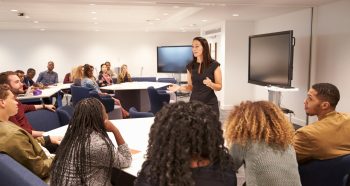To misquote the 17th century English poet John Donne, ‘No teacher is an island….’[i]
This was the thought that came to mind when we recruited for teacher trainers in Malaysia last month. The primary focus was to recruit trainers who are ‘engaged and engaging, and who can understand the needs of our teachers.’ (Paul Ellis, Head of Teaching and Learning Strategy, Cambridge International Examinations) However, one of the most inspiring aspects of the events was the abundance of talented teachers from different schools collaborating and sharing good practice.
Showcasing talent
Over the course of two days, participants discussed their experiences of professional development and took part in a ‘model’ training session. They looked at this further by using a reflection tool – What Went Well (WWW) and Even Better If (EBI). They also delivered a ‘showcase’ of their talents as a trainer, focusing on either active learning strategies or assessment for learning strategies in their subject. So much was gained through participating in each other’s showcases. In the post-event feedback, one participant commented that:
“I really liked the showcases because I got to learn and glean more ideas from other participants on how teaching can be made more interesting and effective. It’s like we could learn so much in such a very short span of time!”
Although participants specialised in different subjects this did not prove a barrier. I saw maths and science teachers reflect enthusiastically on how they might incorporate an activity which had been developed for an English language lesson. I also saw historians think about how drama techniques might help their students. It was great to see teachers of different subjects from different schools come together to share their experience and creativity.
 Encouraging teacher collaboration
Encouraging teacher collaboration
A recent ‘review of reviews of evidence on effective teacher professional development and learning’ released by the Teacher Development Trust found that ‘peer support was a common feature in effective CPDL.’ However, what makes it effective is still contested. The authors point out that collaboration is not sufficient in itself – other conditions also need to be present including:
– Support from colleagues to solve problems
– Input from experts
– Shared goals and new strategies to achieve them
– A focus on the outcome for students[ii]
Both as a teacher and as an Education Officer for Cambridge International Examinations I’ve come across a variety of different approaches taken by teachers in their collaboration with one another including peer observation, lesson study and team teaching. Fellow teachers are a great resource and can provide support, encouragement, insight and new perspectives. If you’re not already building bridges with colleagues in other departments or even other schools, perhaps now is the time to start.
[i] “No man is an island, entire of itself; every man is a piece of the continent, a part of the main. If a clod be washed away by the sea, Europe is the less, as well as if a promontory were, as well as if a manor of thy friend’s or of thine own were: any man’s death diminishes me, because I am involved in mankind, and therefore never send to know for whom the bells tolls; it tolls for thee.” John Donne
[ii] Cordingley, P., Higgins, S., Greany, T., Buckler, N., Coles-Jordan, D., Crisp, B., Saunders, L., Coe, R. Developing Great Teaching: Lessons from the international reviews into effective professional development. Teacher Development Trust. 2015.





